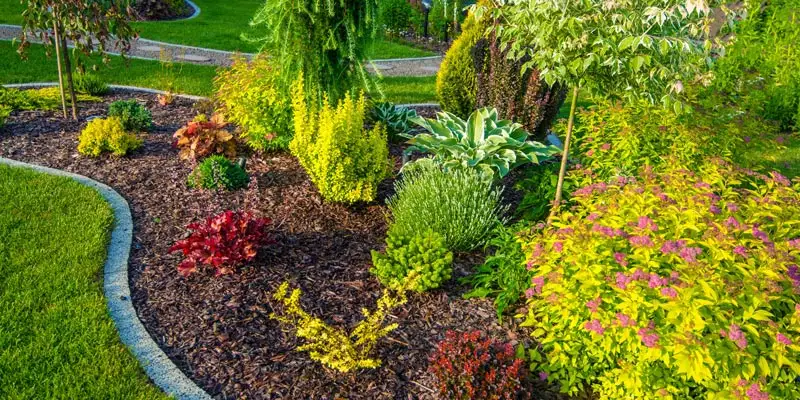Facts About Landscape Design Uncovered
Wiki Article
7 Easy Facts About Landscape Design Shown
Table of ContentsThe 6-Minute Rule for Landscape Design4 Easy Facts About Landscape Design ShownThe Facts About Landscape Design RevealedA Biased View of Landscape Design
Official style motif. Credit History: Gail Hansen, UF/IFAS The lawn is an extension of the home where a range of activities occur. A yard can normally be split into three locations: public (the front yard), private (the backyard), and service (normally the side backyard). The location of activity locations depends primarily on the kind of location, the size of space required, the sort of activity, and the wanted closeness to other tasks and structures (Landscape Design).
The outside wall of the residence often acts as the initial wall or starting factor of an exterior space. Inappropriate uses should be divided, and related tasks, such as food preparation and eating, need to be placed with each other to make the yard extra effective and delightful. When using hardscape to create rooms, use building material comparable to that made use of in your home for connection from your home right into the garden.
Connected spaces. Credit Score: Gail Hansen, UF/IFAS Making use of similar hardscape functions and repeating plants draws the eye around the garden. Essential factors along the road can be highlighted with plantings or attributes that draw attention and urge movement in a certain direction. Relocating along the path takes a person from one area to the next and enables the customer to have a range of experiences.
From a design viewpoint, plant products have three major features in the landscape: visual, structural and utilitarian. Cosmetically, plants develop a visually pleasant atmosphere and structurally plants arrange and specify spaces.
Some Known Facts About Landscape Design.
For mental convenience plants are used as physical or implied obstacles for personal privacy and security. Physical obstacles block both the sight and access to a space and include fencings, walls and plant hedges.Physical and indicated obstacles. Credit Report: Gail Hansen, UF/IFAS For these reasons, the kinds of plants to be used (such as trees, bushes, or groundcovers) should be chosen in the onset of planning. Plant kinds are chosen for their practical abilities to ensure that their future objective and called for room can be considered at the exact same time.
The overhanging aircraft, the upright aircraft and the ground aircraft must all be thought about to produce unit. When the form of a plant bed has been developed, the plants need to be massed (organized) and layered to achieve visual unity and the desired amount of enclosure. The dimension of a plant mass will certainly depend on the total size of the backyard, the size of the individual plants in the mass, and the focus or influence preferred from the plant product.
Each plant mass remains in front of, behind, or alongside, one more mass. Figure 11. Straight plant layers. Credit History: Gail Hansen, UF/IFAS Number 12. Upright plant layers. Credit Scores: Gail Hansen, UF/IFAS Repeating plants within a mass and duplicating masses with comparable plants connects the yard together. The specific plant characteristics must be taken into consideration to efficiently layer and mass plants.
Fascination About Landscape Design
All plant make-ups start with the primary framework plants, the huge, primarily evergreen history plants-such as the trees and large hedges. These plants separate or enframe rooms, control the size of the room, and provide the beginning point for picking the suitable attributes of the 2nd layer, midground plants, for massing and infill.
Essential points in the garden need to be highlighted by the use unique plants, distinctive structures, or yard ornaments. Noting limits or entrances to areas can be done find more info with gates, arbors, and actions, or with using unique and vibrant plants. The kind and/or design theme of the garden will certainly straight from the source frequently help establish the vital points and how they must be highlighted.
Other essential areas in the backyard are centerpieces, which is made use of to visually arrange a designed location. The type of focal point commonly depends upon the checking out point of view. Various perspectives or point of views can disclose different structures in the landscape that might need a range of focal points. Contrasting appearance, form, dimension and shade will catch and hold the eye.
Some Known Factual Statements About Landscape Design
Number 13. Plant forms. Credit Report: Gail Hansen, UF/IFAS After form, appearance is the next leading attribute of a plant; crude, medium and fine structures can be made use of for comparison and focus in the landscape. Type and texture both trump color in the garden for the majority of the year. Throughout certain periods, shade will be the most noticeable quality of the garden.

The pleasurable aroma of plants, the audio of wind in the trees, the noise and texture of water, and the colors and structures of sculptures, pots and yard furnishings all include in the experience of the garden. One information that is frequently overlooked is the impact of light on the aesthetics of the plants.
The whole yard adjustments in function and appearance throughout the day, and the course of a year, as the light and temperature level modification from morning to evening and season to period. Plant selection should think about a plant's development rate, its fully grown dimension and form, and the upkeep it will require.
It is very important to recognize the ultimate mature size of plants so they can be positioned in the right Bonuses location and spaced effectively when they are installed. Providing plants space to expand is a challenge since the usual mature size is commonly based upon optimum growing conditions and the ecological problems of a website may create a plant to expand bigger or stay smaller.
Report this wiki page